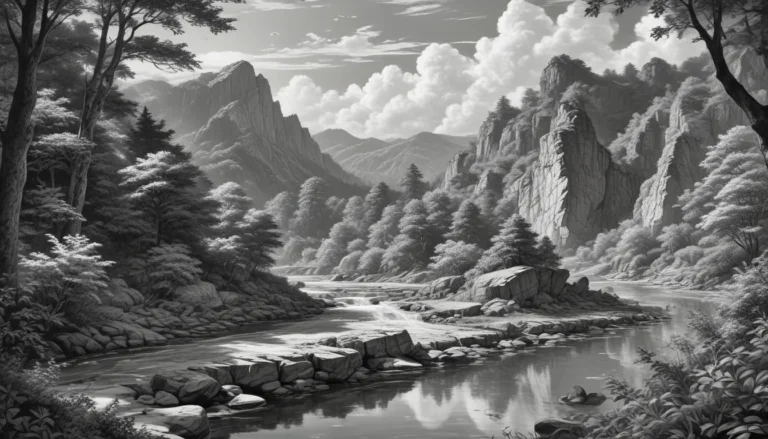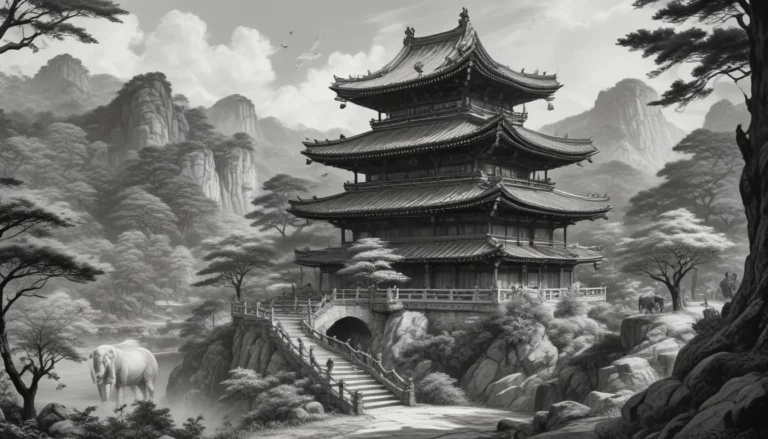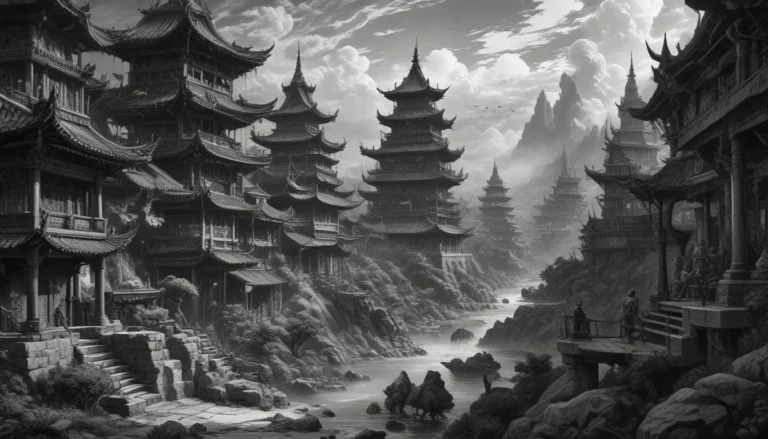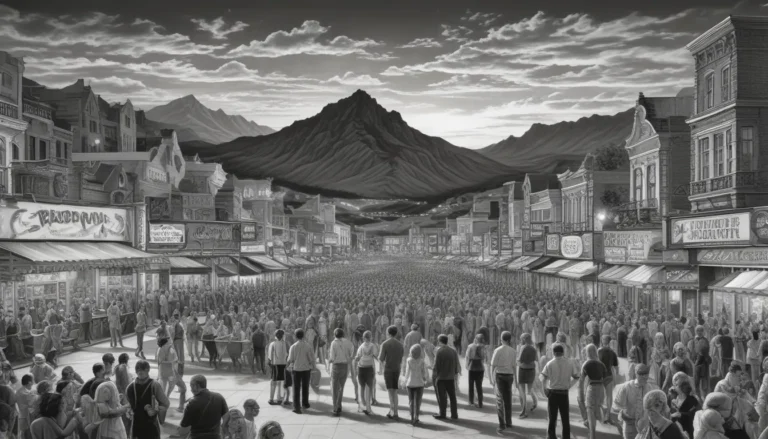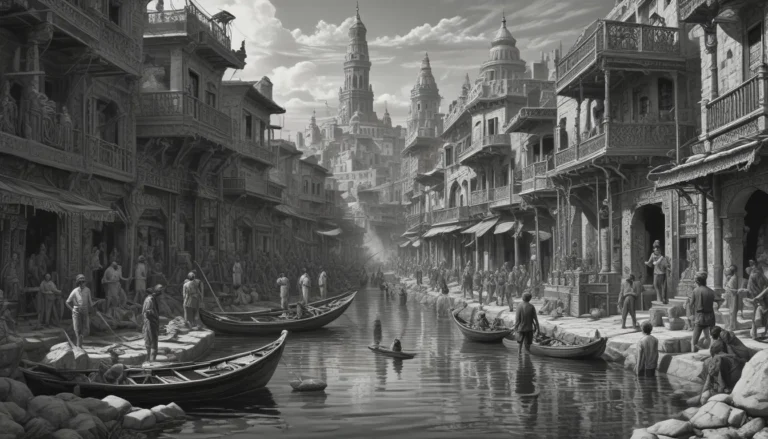The images in our articles are for illustrative purposes only and may not exactly match the content. They are intended to capture your interest and complement the text, not to replace it.
Welcome to the captivating city of Hué, nestled on the central coast of Vietnam. Boasting a rich tapestry of history, culture, and natural beauty, Hué stands as a testament to the country’s imperial past. With majestic palaces, temples, and tombs adorning its landscape, Hué offers a unique charm that draws visitors from around the globe.
Unlocking the Secrets of Hué
Embark on a virtual journey through the enchanting streets of Hué as we uncover 31 fascinating facts about this historic city. From its UNESCO World Heritage sites to its mouthwatering cuisine, Hué beckons travelers seeking an authentic Vietnamese experience. Let’s dive deep into the hidden gems and unique offerings that make Hué a must-visit destination.
Delving into Hué’s Rich Heritage
1. Former Imperial Capital of Vietnam
Hué proudly served as the capital of Vietnam during the Nguyen Dynasty from 1802 to 1945, holding a significant place in the country’s history.
2. Perfume River Tranquility
Meandering through the city, the Perfume River adds to Hué’s serene beauty, offering picturesque views and a sense of tranquility.
3. Storied Imperial Citadel
The Hué Imperial Citadel, a UNESCO World Heritage Site, stands as a testament to Vietnam’s feudal past, boasting intricate architecture and historical significance.
4. Culinary Paradise
Hué’s cuisine delights with distinctive flavors and meticulous presentation, featuring local favorites like Banh Beo, Bun Bo Hue, and Com Hen.
5. Iconic Thien Mu Pagoda
Rising gracefully with seven stories, the Thien Mu Pagoda symbolizes Hué’s spiritual heritage and provides panoramic views of the surrounding landscape.
6. Creative City of Gastronomy
Designated by UNESCO, Hué shines as a Creative City of Gastronomy, celebrating its unique culinary heritage on a global stage.
Hué’s Cultural Tapestry
7. Forbidden Purple City Enigma
Nestled within the Hué Imperial Citadel, the Forbidden Purple City once served as an exclusive retreat for the imperial family and their inner circle.
8. Ao Dai Elegance
Renowned for its production of the traditional Vietnamese ao dai dress, Hué offers a glimpse into the exquisite craftsmanship and artistry of this iconic garment.
9. Coastal Oasis at Thuan An Beach
A mere 15 kilometers from the city center, Thuan An Beach beckons visitors with its pristine sands and stunning sunsets, providing a perfect retreat.
Experiencing Hué’s Marvels
10. Gateway to Phong Nha-Ke Bang National Park
Hué serves as a starting point for exploring the wonders of the Phong Nha-Ke Bang National Park, known for its spectacular caves and diverse wildlife.
11. Iconic Huong River Bridge
Spanning the Perfume River, the Huong River Bridge, also known as Truong Tien Bridge, stands as a historic landmark, offering a picturesque setting for travelers.
12. Vibrant Hué Festival Tradition
Biennially, Hué hosts a lively festival celebrating arts and culture through traditional music, dance, exhibitions, and cultural activities.
Hué’s Enduring Legacy
13. Vietnam War Legacy
Hué endured significant damage during the Vietnam War, particularly during the Battle of Hué in 1968, but has since been restored to its former magnificence.
14. Majestic Tomb of Emperor Minh Mang
The Tomb of Emperor Minh Mang captivates visitors with its grandeur and integration with the natural landscape, showcasing the opulence of the Nguyen Dynasty.
15. Harmonious Hué Royal Court Music
Renowned for its traditional music, “Nha Nhac,” Hué’s cultural scene has been recognized by UNESCO as a masterpiece of oral and intangible heritage.
Engaging with Hué’s Vibrant Community
16. Academic Eminence at Hué University
Established in 1957, Hué University stands as one of Vietnam’s oldest and most esteemed educational institutions, nurturing academic excellence.
17. Architectural Splendor of Trang Tien Bridge
The Trang Tien Bridge, connecting Hué’s northern and southern sectors over the Perfume River, serves as a vital transportation artery and a visual delight.
18. Thanh Toan Bridge’s Architectural Marvel
Also dubbed the Japanese Covered Bridge, the Thanh Toan Bridge showcases exquisite design and attracts visitors seeking architectural elegance.
Embracing Hué’s Natural Beauty
19. Picturesque Countryside Surroundings
Beyond the city limits, lush rice paddies, quaint villages, and breathtaking landscapes adorn Hué’s outskirts, showcasing Vietnam’s rural allure.
20. Traditional Craftsmanship Hub
Skilled artisans in Hué continue to craft intricate handicrafts such as conical hats, traditional incense, and lacquerware, preserving age-old traditions.
21. Stately Hué Royal Palace
The Hué Royal Palace, also known as Thai Hoa Palace, stands as an architectural masterpiece and served as the official residence of Nguyen emperors.
Hué’s Adventurous Spirit
22. Cycling Enthusiasts’ Haven
Hué beckons cycling enthusiasts with a myriad of routes through the city and its countryside, offering a leisurely exploration of its natural splendor.
23. Historic Hué Museum of Royal Antiquities
Housing a vast collection within the Hué Royal Palace, the museum showcases artifacts spanning the illustrious history of the Nguyen Dynasty.
24. Festive Hué Traditional Folk Celebrations
Year-round, Hué celebrates traditional festivals like the Hué Festival, Ancestral Anniversary of Nguyen Dynasty, and Nam Giao Offering Ritual, immersing visitors in cultural vibrancy.
Treasuring Hué’s Intangible Heritage
25. UNESCO Recognition for Hué Royal Court Music
Recognized as an intangible cultural heritage by UNESCO, Hué’s Royal Court Music enchants listeners with its refined melodies and elegant compositions.
26. Photographic Wonders of Hué
A paradise for photography enthusiasts, Hué’s landscapes, bustling markets, and cultural treasures present endless opportunities for capturing memorable moments.
27. Expansive Hué Citadel Complex
Covering over 500 hectares, the Hué Citadel Complex stands as one of Vietnam’s largest monument ensembles, comprising various sections like the Forbidden Purple City and ornate gardens.
Embracing Hué’s Cultural Significance
28. UNESCO Distinction for Hué
Since 1993, Hué has held the prestigious title of a UNESCO World Heritage Site, underscoring its exceptional cultural value and historical significance.
Intrigued by the allure of Hué? Join us as we unravel the city’s enchanting history, vibrant culture, and breathtaking landmarks, creating lasting memories amidst Vietnam’s imperial legacy.
Unveiling the Charms of Hué
Explore the wonders of Hué, a city steeped in history and cultural richness, offering a tapestry of experiences for travelers. From the imperial citadel to delectable local cuisine, Hué beckons adventurers of all kinds. Discover why Hué remains a treasure trove of hidden gems waiting to be explored.
Frequently Asked Questions
1. What is the best time to visit Hué?
- Hué is best visited during spring (February to April) and autumn (September to December) for pleasant weather. Avoid the rainy season (October to January) for a more enjoyable experience.
2. What are the must-visit attractions in Hué?
- Don’t miss the Imperial City, Thien Mu Pagoda, Tomb of Khai Dinh, Tomb of Minh Mang, and the Perfume River for a glimpse into Hué’s historical and architectural wonders.
3. How do I get around Hué?
- Transportation options in Hué include taxis, motorbike rentals, cyclos, and walking, especially in the central area where many attractions are within a comfortable walking distance.
4. What is the local cuisine of Hué known for?
- Hué’s imperial cuisine features royal dishes like banh khoai, bun bo Hué, and banh bot loc, showcasing the city’s culinary heritage and flavors.
5. Are there any festivals or events in Hué?
- Hué hosts vibrant festivals like the Hué Festival, Mid-Autumn Festival, and Lunar New Year celebrations, offering a glimpse into the city’s rich cultural traditions.
6. Is Hué a safe city for tourists?
- Generally, Hué is safe for tourists, but it’s advisable to take standard precautions like securing belongings and being aware of your surroundings when exploring the city.
7. Can I take a boat tour on the Perfume River?
- Boat tours on the Perfume River offer a relaxing and picturesque way to explore Hué’s beauty and visit attractions along the riverbanks, enhancing your experience in the city.
Hué’s allure lies in its rich heritage, vibrant culture, and engaging community, making it a destination that promises unforgettable memories and immersive experiences for travelers of all kinds. Explore Hué’s historical landmarks, savor its culinary delights, and bask in the warmth of its hospitality as you uncover the hidden treasures of this enchanting city. Join us on a journey through Hué’s captivating streets, where every corner holds a story waiting to be discovered.

